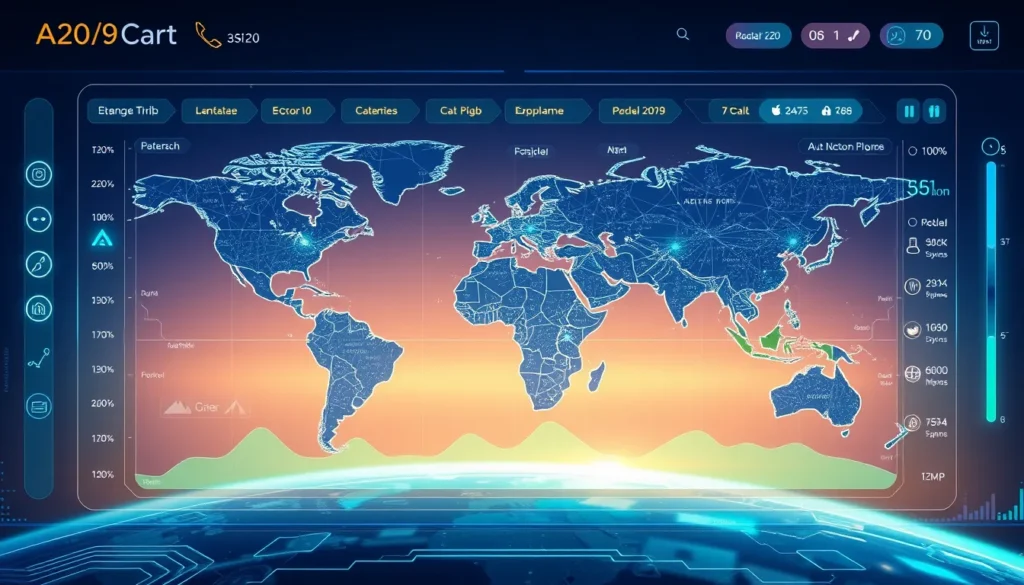Now Reading: Meta World Model for Adaptive Robotics: Advancing Robotic Object Manipulation
-
01
Meta World Model for Adaptive Robotics: Advancing Robotic Object Manipulation
Meta World Model for Adaptive Robotics: Advancing Robotic Object Manipulation

Meta World Model for Adaptive Robotics: Advancing Robotic Object Manipulation
Meta’s breakthrough in robotics is setting a new standard in intelligent automation. The revolutionary Meta world model for adaptive robotics is empowering machines to tackle object manipulation tasks in environments they have never encountered before. In this article, we explore the technology behind this innovation, discuss its implications, and illustrate how it is reshaping the world of robotic object manipulation.
Introduction to the Meta World Model
In a groundbreaking development from Meta (visit the official site at https://about.meta.com), researchers have unveiled an innovative world model designed to boost robotic object manipulation. Using advanced algorithms and deep learning techniques, this model allows robots to predict and interact with physical objects even in unfamiliar environments. This achievement not only marks a significant leap forward in adaptive robotics but also sets a new benchmark in simulation training robotics and deep learning robotics.
Key Components of the Meta World Model
The Meta world model for adaptive robotics is built on several critical pillars:
- Simulation Training Robotics: Robots are exposed to a vast array of virtual environments, which trains them to adapt to unpredictable real-world scenarios.
- Deep Learning Robotics: Advanced neural network architectures allow the robot to learn from diverse training data, improving decision-making and object manipulation.
- Generative Modeling Robotics: By generating multiple potential outcomes, the model can forecast various scenarios, ensuring the robotic system remains adaptable to changes.
This triple-layered approach not only enhances object manipulation but also ensures that the robots can reliably operate under conditions that were not part of their initial training playbook.
Simulation to Real-World Robot Transfer
One of the most compelling advantages of the Meta world model is its ability to bridge the simulation to real-world robot transfer gap. Traditionally, when robots were trained in controlled, simulated environments, they faced significant challenges when confronted with the variability of the real world. However, the innovative use of simulation training robotics in the Meta world model has mitigated these issues by:
- Exposing the robot to diverse virtual scenarios.
- Encouraging self-supervised learning to adjust manipulation strategies on the fly.
- Utilizing a robust internal model that predicts physical interactions in various contexts.
Robots Manipulating Objects in Unknown Environments
A dedicated focus on long-tail queries such as ‘robots manipulating objects in unknown environments’ has led to the development of a system capable of genuine adaptability. This section examines how the Meta world model for adaptive robotics enables:
- Quick adaptation to new and unexpected physical dynamics.
- Enhanced error reduction in variable lighting, textures, and object shapes.
- Seamless transition from theory in the lab to practical applications in dynamic settings.
This subfield of robotics innovation is crucial as industries continue to seek solutions that minimize downtime and enhance operational efficiency.
Benefits and Applications
Companies across a range of sectors, from manufacturing to logistics and even domestic applications, stand to benefit from these advancements:
- Manufacturing and Warehouses: Robots can dynamically manage and reorganize inventory with minimal human intervention.
- Logistics: Enhanced object manipulation promotes faster sorting and handling of goods.
- Home Automation: Adaptive robots can adjust to the diversity of domestic settings, assisting with day-to-day tasks.
The implications extend beyond commercial applications. Integrating simulation training robotics and deep learning robotics into everyday use is paving the way for innovations in robotic surgery, autonomous navigation, and even space exploration, where unpredictable environments require robust and flexible solutions.
Challenges and Future Directions
Despite the impressive capabilities of the Meta world model, challenges remain. Some of these include:
- Ensuring long-term safety and reliability in varied operational settings.
- Addressing ethical considerations tied to autonomous decision-making in robotics.
- Scaling the technology for widespread industrial and commercial use without sacrificing performance.
In the coming years, ongoing research will likely focus on further refining these models. Areas such as generative modeling robotics could be expanded to allow robots additional predictive capacities, thereby enhancing their performance even in the most unpredictable scenarios.
Conclusion
The advent of the Meta world model for adaptive robotics is more than just a technical breakthrough—it is a bold stride into the future of intelligent robotic systems. With a strong foundation in simulation training robotics, deep learning robotics, and generative modeling robotics, this technology is setting a new benchmark for robotic object manipulation. As robots become increasingly capable of handling objects in unknown environments, industries can look forward to more efficient, adaptable, and versatile robotic solutions.
Meta’s innovation is not only transforming robotics but is also paving the way for a future where machines learn, adapt, and thrive alongside human ingenuity. With ongoing advancements and continued integration of cutting-edge AI techniques, the potential for even more sophisticated and resilient robotic systems is limitless. This breakthrough may well represent the dawn of a new era in robotics, where adaptability and efficiency converge to meet the dynamic demands of modern industry and daily life.
For further insights into advances in robotics, consider exploring resources such as the Robotics Industries Association, which regularly reports on the latest trends and innovations in this exciting sector.
By embracing the challenges of simulation to real-world robot transfer, Meta is charting a path toward a future where robotic systems are not only more intelligent and autonomous but also seamlessly integrated into the fabric of our everyday lives.

























